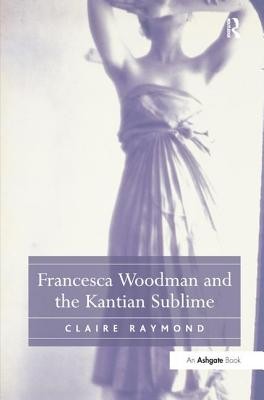
- We will send in 10–14 business days.
- Author: Claire Raymond
- Publisher: Routledge
- ISBN-10: 1138246689
- ISBN-13: 9781138246683
- Format: 15.6 x 23.4 x 1 cm, minkšti viršeliai
- Language: English
- SAVE -10% with code: EXTRA
Reviews
Description
In her feminist inquiry into aesthetics and the sublime, Claire Raymond reinterprets the work of the American photographer Francesca Woodman (1958-1981). Placing Woodman in a lineage of women artists beginning with nineteenth-century photographers Julia Margaret Cameron and Clementina, Viscountess Hawarden, Raymond compels a reconsideration of Woodman's achievement in light of the gender dynamics of the sublime. Raymond argues that Woodman's photographs of decrepit architecture allegorically depict the dissolution of the frame, a dissolution Derrida links to theories of the sublime in Kant's Critique of Judgement. Woodman's self-portraits, Raymond contends, test the parameters of the gaze, a reading that departs from the many analyses of Woodman's work that emphasize her dramatic biography. Woodman is here revealed as a conceptually sophisticated artist whose deployment of allegory and allusion engages a broader debate about Enlightenment aesthetics, and the sublime.
EXTRA 10 % discount with code: EXTRA
The promotion ends in 22d.23:54:41
The discount code is valid when purchasing from 10 €. Discounts do not stack.
- Author: Claire Raymond
- Publisher: Routledge
- ISBN-10: 1138246689
- ISBN-13: 9781138246683
- Format: 15.6 x 23.4 x 1 cm, minkšti viršeliai
- Language: English English
In her feminist inquiry into aesthetics and the sublime, Claire Raymond reinterprets the work of the American photographer Francesca Woodman (1958-1981). Placing Woodman in a lineage of women artists beginning with nineteenth-century photographers Julia Margaret Cameron and Clementina, Viscountess Hawarden, Raymond compels a reconsideration of Woodman's achievement in light of the gender dynamics of the sublime. Raymond argues that Woodman's photographs of decrepit architecture allegorically depict the dissolution of the frame, a dissolution Derrida links to theories of the sublime in Kant's Critique of Judgement. Woodman's self-portraits, Raymond contends, test the parameters of the gaze, a reading that departs from the many analyses of Woodman's work that emphasize her dramatic biography. Woodman is here revealed as a conceptually sophisticated artist whose deployment of allegory and allusion engages a broader debate about Enlightenment aesthetics, and the sublime.


Reviews